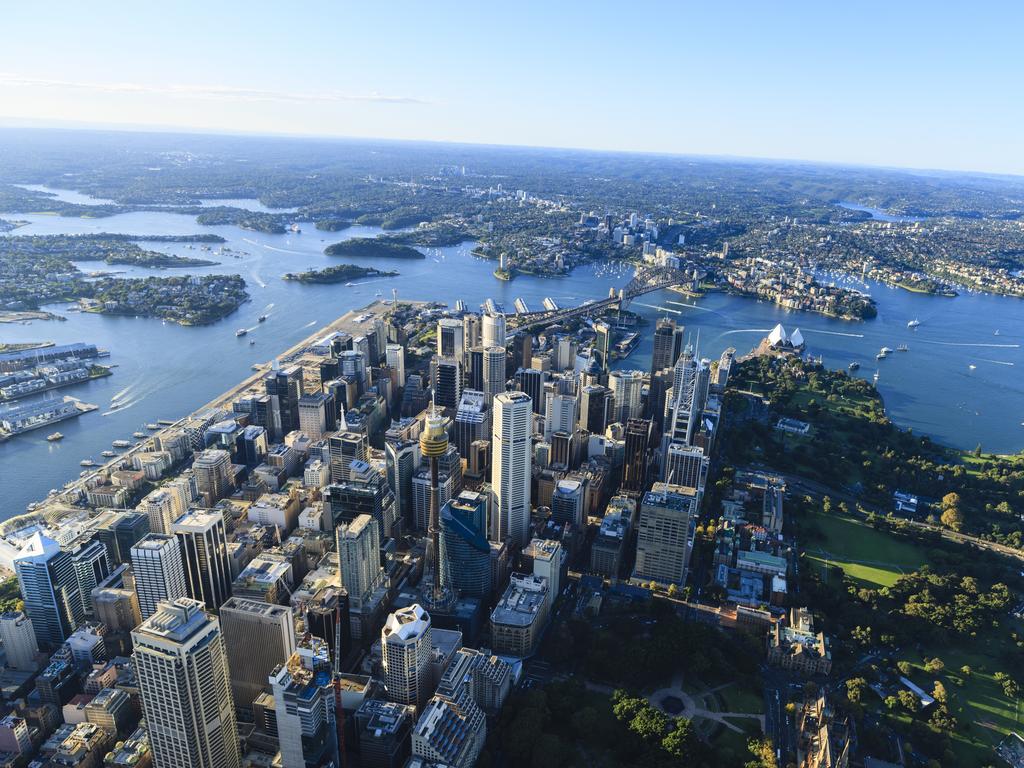Australia: The place to be to capitalise on the future
Population data gives an insight into the future and reveals that Australia may well be the land of opportunity.

The pandemic has forced many of us to rethink how we live, invest, and spend our time. What makes Australia a great place to live? Are there any other countries that offer better prospects and opportunities?
The UN World Population Prospects data, released every two years, provides answers to all these questions and more. Originally due in 2021, this data was delayed due to Covid, and the latest figures were released on World Population Day on July 11.
The latest estimated global population for 2021 is 7.9 billion. It grew by 68 million between 2020-21.
In 2020-21, the global population grew by 0.82 per cent. At its peak, the global population increased by 2.3 per cent in 1963. Since then, the growth rate has continued to decline and had fallen below 1 per cent in 2019.
Globally, about a billion people have been added every 12 years since 1975. The last milestone – seven billion – was attained in 2011 and by the end of 2022, another milestone will be passed by adding a billion more people to the global population. According to the UN, this event is expected to take place on November 15 this year.
Australia’s population is estimated to be 25.9 million in 2021. This figure is slightly higher than the estimated population by the ABS for 2021 which is 25.7 million.
Australia sits at a slightly higher growth rate compared to the global average at 0.97 per cent in 2020-21. Australia had its peak growth rate at 3.2 per cent in 1970.
Since then, there has been a gradual decline until the early 2000s. This is following declined fertility rates after the pill was placed on the Pharmaceutical Benefits Scheme.
However, in the beginning of the millennium, population growth rates started rising steeply until 2006. Growth stabilised before falling again in 2020.
The drop in the growth rate in 2020 is clearly an impact of the coronavirus. Border closures has had a significant impact on the net overseas migration, which has been a strong component of the population increase.
The global population was significantly affected by Covid. Approximately five million excess deaths are estimated in 2020 by the UN’s latest population dataset. In 2021, this number doubled to reach 10 million.
According to the UN, Australia saw 4378 fewer deaths in 2020 than in 2019. For the same period, the ABS estimated 8001 fewer deaths.
According to the previous version of the UN World Population Prospects, the global population was expected to peak around 10.9 billion in 2100.
In the latest release it is estimated that this peak would be attained before the end of the century in 2086 at just over 10.4 billion people. That’s a downwards correction of almost half a billion people.
The UN now expects fertility rates to fall more quickly in low-income countries. The current revision also forecasts a rebound in fertility rates across high-income countries by the end of the century.
Working age
Many aspects of society are affected by the age structure of the population, including economic growth rates, labour force participation, educational and healthcare costs, and housing markets.
Conventionally, age is considered to be a direct indicator of productivity. It is used to identify who is a worker and a dependent.
It is generally accepted that productive life begins at 15 years of age and ends at 65 years of age.
In 1950, 27 per cent of the population was aged 0-14. By 2021, the proportion of persons aged 0-14 had dropped to 18 per cent. A further decline of 3 per cent is anticipated to take place by 2050, bringing the figure down to 15 per cent.
Between 1950 and 2021, the working-age population remained relatively unchanged, comprising 65 per cent of the total population. In the period 1980 to 2010, the working-age population increased, but it has been gradually decreasing since then.
According to forecasts, this figure is expected to reduce further to 61 per cent by 2050.
The working-age population and its proportion of the population may diminish as a whole, but it still grows in total terms.
Let us take a look at the top 10 richest countries per capita with populations of at least 10 million in 2021. In terms of GDP, Australia is the third wealthiest nation on the list.
Australia’s working-age population is projected to grow by 8 per cent between 2021 and 2031, and by 17 per cent between 2021 and 2050.

This level of growth is unmatched by any other rich country with a substantial population.
In the US, and UK the working-age population is projected to increase by only 1 per cent for the same period while all the other countries in this list have a declining working-age population.
The declining worker base in the long term is definitely a challenge that has to be mitigated. Compared to other countries, Australia definitely has a strong migration program that attracts young workers. Maybe continuing this trend would ensure the sustainability of the worker base in the long run.
With an influx of young people, there will be more taxpayers to drive the economy, as well as a booming consumer base. With a growing working-age population, more people will buy houses, buy goods, take care of their families, increasing the demand for services.
Life expectancy
Millennials are the most populous generation in 2021, according to the ABS. They are currently entering family formation stage. Consequently, there will be a need for more net new housing and supporting infrastructure in order to meet the needs of this demand. This in turn translates into more jobs that will benefit middle Australia.
In 1950, people older than 65 accounted for 8 per cent of the population. As of 2021, this proportion has almost doubled to 17 per cent. This cohort is projected to increase to 24 per cent by 2050.
In most countries, 65-year-olds can expect not only longer lives, but more years of good health compared to their parents and grandparents because of medical advancements, improved nutrition, and a less demanding lifestyle. A suitable example is Australia.
Australia’s life expectancy ranks fifth in 2021 according to the latest UN estimates with an average life expectancy of 84.5 years. This increased by 15.5 years from 69 years in 1950.
Australia also ranks second in life expectancy for males at 83.2 years and eighth for females with a life expectancy of 85.8 years.
Data from the ABS Household Income and Wealth Survey shows that persons aged over 65 have the highest net worth regardless of their family composition.
These are inner suburban homeowners whose super funds have recently become available. In other words, these are individuals who are in pursuit of a lifestyle. They have the highest disposable income, and this is a market that can be captured by any services that offer luxury, lifestyle and indulgence.
With younger people increasing, we will need more houses, more Ikeas, Bunnings, Kmarts and the like. In the coming decade, many businesses including the property industry will flourish in Australia – demographics all but guarantee this.
It is true that there are other nations that are demographically similar or even better than Australia. It’s easy to wonder why those countries aren’t a better choice. Well, the answer is no other country has the growth and spending capacity that we have.
Despite an ageing population, Australia‘s demographic outlook remains strong. There is no doubt that the country offers better prospects than the US, Canada, and UK both in the medium and long term. Australia’s population base and tax base is set to grow in the coming decades. This is encouraging news for anyone looking to invest their time, energy and resources in Australia.
Hari Hara Priya Kannan is Data Scientist at The Demographics Group





To join the conversation, please log in. Don't have an account? Register
Join the conversation, you are commenting as Logout